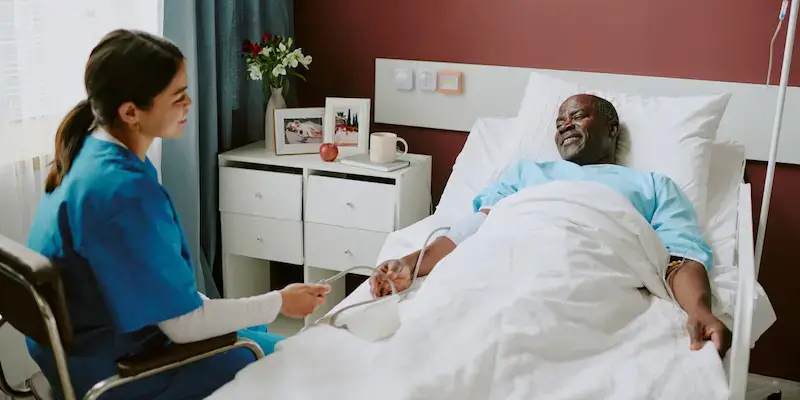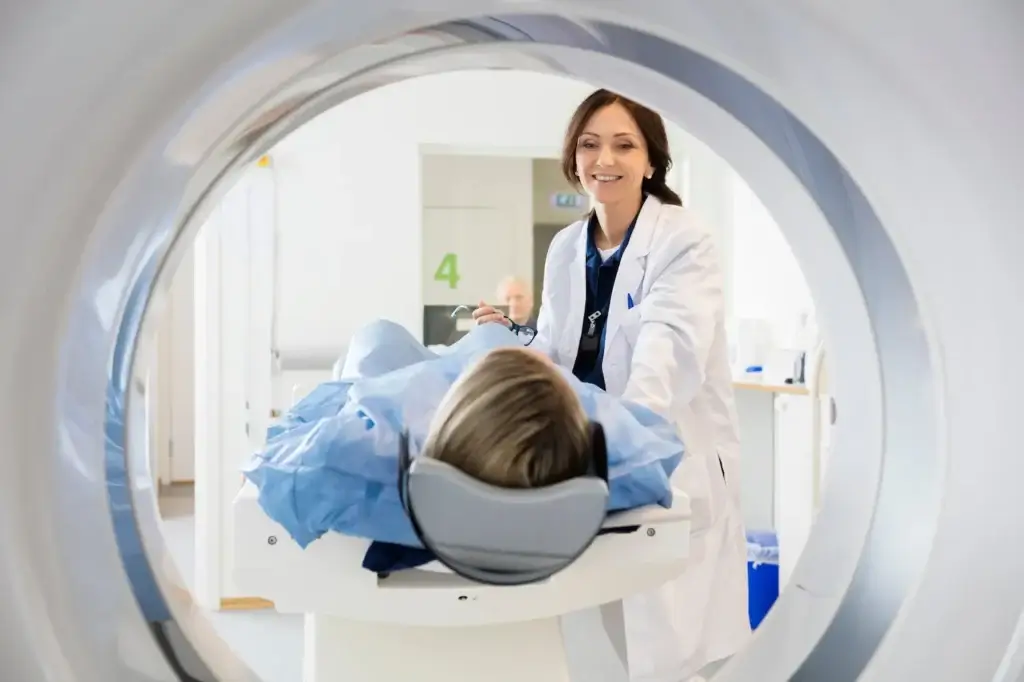News
How to Manage Chronic Lower Back Pain

Living with persistent lower back pain can be draining. While short-term backache is common, pain that lingers for weeks or keeps returning can disrupt your daily routine, work, sleep and mood. If you’re searching for ways to manage lower back pain, the right combination of self-care and expert support can help you stay active and feel more in control.
At King Edward VII’s Hospital, our team of orthopaedic consultants, pain specialists and physiotherapists is experienced in assessing and treating all forms of back pain.
Our guide explains what chronic lower back pain is, explores common causes, offers practical day-to-day management strategies and highlights when it’s important to seek specialist advice.
What is chronic lower back pain?
Chronic lower back pain is discomfort in the lower area of your back that lasts for 12 weeks or more. It may feel like a dull ache, stiffness or sharp pain that sometimes spreads into the buttocks or legs.
Unlike acute back pain, which usually improves within a few days or weeks, chronic pain can linger or flare up (come back after going away), even after the original strain or injury has healed.
Pain often varies from day to day. Many people notice it worsens after long periods of sitting, heavy lifting or a poor night’s sleep. Over time, this can make exercise and daily tasks more challenging, which may affect fitness and confidence. Understanding the cause and creating a clear, practical plan are key to managing chronic back pain in the long term.
Common causes and risk factors of chronic lower back pain
Chronic lower back pain can develop for many reasons, and sometimes more than one factor contributes.
Common causes include:
- Herniated or slipped disc – the discs between the bones of your spine act as cushions. If the soft centre pushes out through a weak spot in the outer layer, it can press on nearby nerves, causing pain, tingling or weakness
- Spinal stenosis – this is a narrowing of the spinal canal, the space that carries your spinal cord and nerves. It can develop with age and may put pressure on nerves, causing pain, numbness or weakness
- Osteoarthritis – a condition where the protective cartilage that cushions the joints breaks down over time. In the spine, this can affect the small joints between the vertebrae, leading to pain, stiffness and reduced movement
- Muscle or ligament strain – often caused by lifting something heavy, twisting awkwardly or overusing the back muscles
- Poor posture – sitting or standing in a slouched position for long periods can strain the muscles and ligaments in the lower back, contributing to ongoing discomfort
Risk factors for lower back pain
Certain factors can make long-term pain more likely, though having one doesn’t mean you will definitely develop chronic pain. Understanding these risk factors can help you take proactive steps to protect your back.
Common risk factors include:
- Getting older
- Being less physically active
- Carrying extra weight
- Doing heavy manual work or prolonged sitting
- Smoking
- Low mood or high stress
- A previous back injury
How to manage lower back pain day-to-day
Often, there’s no single fix for lower back pain. Most people benefit from a plan that blends movement, lifestyle changes and targeted treatments.
The steps below are generally safe for most adults, though make sure to check with a healthcare professional before trying anything new.
Stay active with guided exercise
Movement helps reduce stiffness and improve confidence. A physiotherapist can design a tailored programme that strengthens your core and glute muscles while improving flexibility.
Low-impact activities, such as walking, swimming or cycling, are excellent starting points. Short, regular sessions usually work better than occasional long workouts, helping you build consistency without overloading your back.
Even engaging in your favourite hobbies may help. For instance, gardening may help reduce back pain and support your emotional wellbeing by letting you connect with nature.
Physiotherapy
Targeted rehabilitation and physiotherapy teach you how to move safely, build strength and pace activities. Techniques such as manual therapy and guided exercise can reduce pain and improve function.
Our on-site team provides personalised programmes and clear goals, along with practical advice you can use at home to support your recovery.
Posture and workplace setup
Poor posture and an unsuitable workspace can put extra strain on your back. To reduce pressure, position your screen at eye level, keep your feet flat on the floor and support your lower back with your chair or a small cushion. Change your position regularly to prevent stiffness and use a headset for long calls.
By making these simple adjustments, you can stay more comfortable throughout the day.
Pacing and flare-up planning
Overdoing activities can make back pain worse, so pacing yourself is key. Break tasks into smaller chunks and alternate between sitting, standing and walking to help prevent flare-ups.
It’s also helpful to have a simple plan for ‘bad days’, such as gentle stretches, applying heat or cold and taking short rest breaks before returning to easy movement. Having a plan can make symptoms feel more manageable.
Heat and cold therapy
Temperature-based treatments can be an easy way to alleviate back discomfort. Heat helps relax tight muscles, while cold packs can reduce swelling and numb soreness. Apply for 15–20 minutes at a time, check your skin often and place a cloth between the pack and your skin for protection.
Pain relief
Managing pain can help you stay active and carry on with daily life. Short courses of over-the-counter medicines may be enough for mild symptoms, and a pharmacist or GP can advise on the safest options.
In some cases, your specialist may recommend targeted injections, like facet joint injections. If stronger medicines are needed, these are usually part of a broader plan that includes physiotherapy or other rehabilitation methods like hydrotherapy.
Sleep and routine
Good-quality sleep supports recovery and can help reduce pain levels. Aim for regular bed and wake times, and choose a supportive mattress and pillow that keep your spine in a comfortable position.
Reducing caffeine later in the day and building a calming bedtime routine can also improve sleep quality.
Weight management and lifestyle
Maintaining a healthy weight can reduce pressure on the spine and joints. If you carry extra weight, gradual weight loss through a balanced diet and regular physical activity can make a meaningful difference over time.
Limiting alcohol and staying active not only supports your back health but also contributes to your overall wellbeing.
Mind-body approaches
Long-term pain can affect both your emotional and physical wellbeing. Mind-body techniques such as cognitive behavioural therapy (CBT), mindfulness and relaxation exercises can help you cope with pain, reduce fear of movement and ease muscle tension. These strategies work best alongside regular exercise and physiotherapy.
If you need further tests to understand the cause of your pain, we can arrange prompt access to advanced diagnostics at King Edward VII’s Hospital, including magnetic resonance imaging (MRI) and computed tomography (CT) scans, X-rays and specialist assessments. All results are carefully reviewed by expert consultants, ensuring you receive a clear diagnosis and a tailored treatment plan without delay.
When to seek medical help for lower back pain
Most lower back pain improves with self-care or over-the-counter pain relief.
However, you should seek urgent medical help if you notice:
- New or worsening weakness, numbness or tingling in one or both legs
- Loss of bladder or bowel control
- Severe pain after a fall or accident
- Unexplained weight loss, fever or night sweats
- Pain that is constant at night or not relieved by rest
If your pain lasts longer than 6 to 12 weeks, keeps returning or limits daily life, it’s important to speak with a doctor or pain management specialist. They can examine your back, review your medical history and advise on a personalised treatment plan. This may include physiotherapy, pain management, imaging or, if necessary, referral to a spinal surgeon.
Back pain treatment in London at King Edward VII’s Hospital
If you’re seeking back pain treatment in London, King Edward VII’s Hospital offers rapid access to a multidisciplinary team of experts.
Your lower back pain care may include:
- Assessment with orthopaedic consultants who specialise in spinal conditions
- Pain management support with tailored plans that may include targeted injections
- Advanced physiotherapy and rehabilitation, with clear goals and progress tracking
- On-site imaging for swift diagnosis and a coordinated treatment plan
You’ll receive a personalised treatment plan focused on what matters most to you. Our aim is to relieve pain, restore movement and help you return to the activities you enjoy. If surgery is needed, we’ll explain benefits and risks in clear terms and guide you through recovery with close follow-up.
Our specialists can help with ongoing lower back pain. Book a consultation and start your pain relief journey today.
Latest Hospital News
Should you wish to speak to our press team, please visit Press Enquiries




